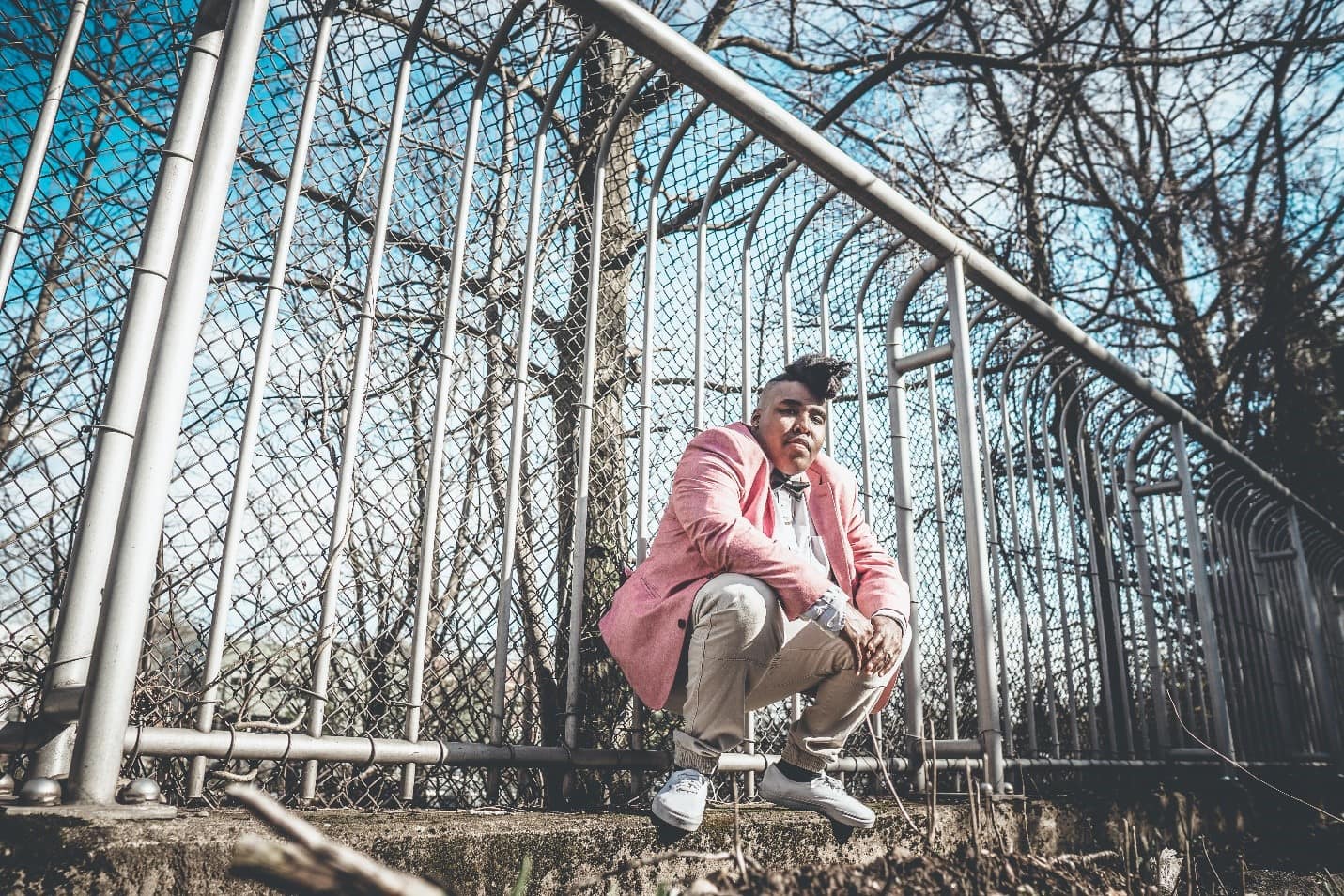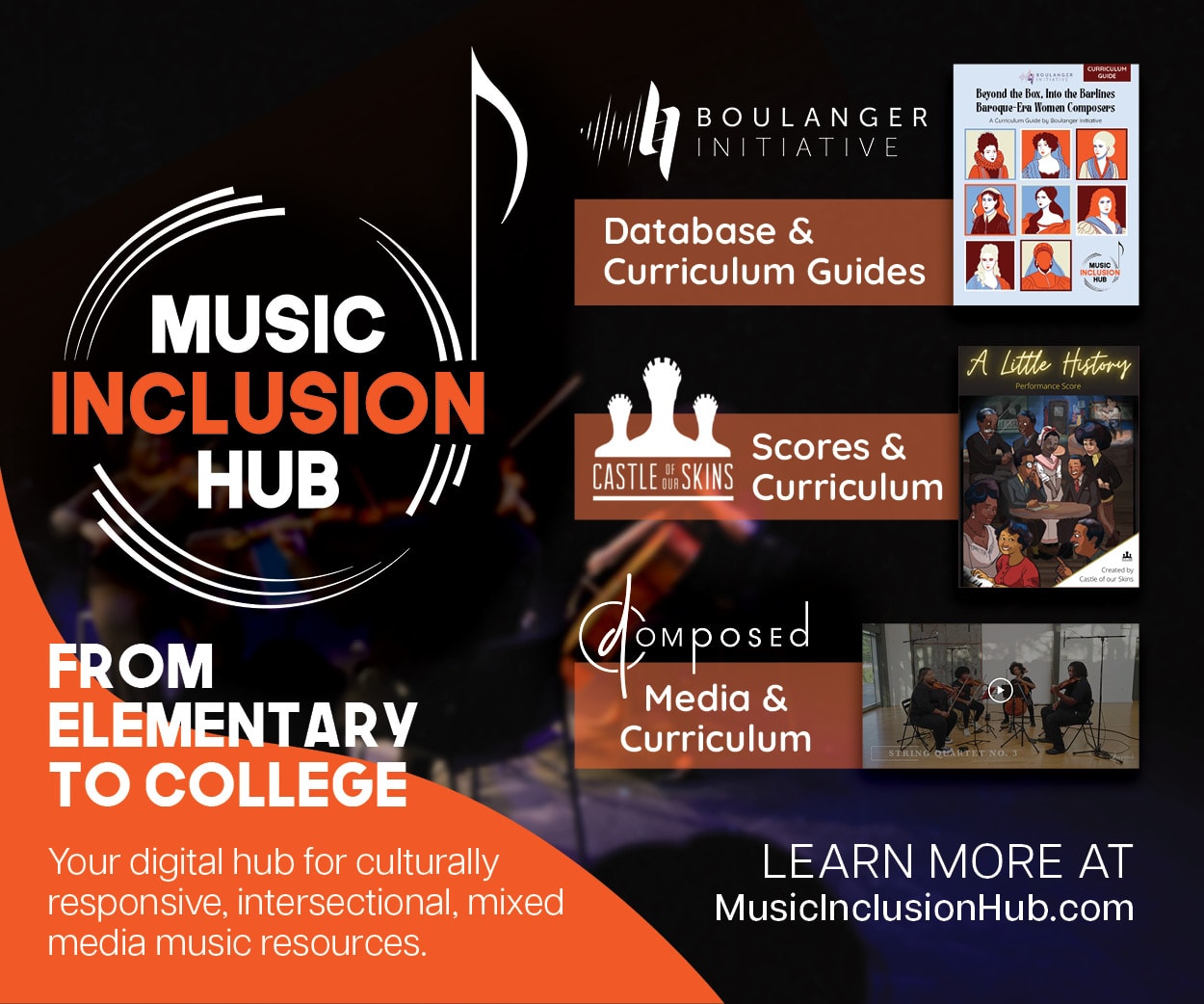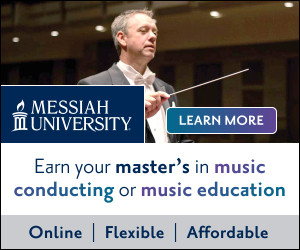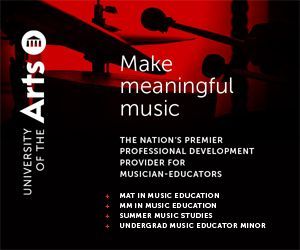/ News Posts / Hip Hop Empowers!
Hip Hop Empowers!
Interview with Harlem-Raised, Boston-Based Hip Hop Artist Billy Dean Thomas
By Thomas Amoriello Jr.
NAfME Council for Guitar Education Chair
The six elements of the hip hop movement are coined by music pioneer Ronald “Bee-Stinger” Savage as:
1) Consciousness Awareness
2) Civil Rights Awareness
3) Activism Awareness
4) Justice
5) Political Awareness
6) Community Awareness in Music
Hip hop is an original African American form of musical art considered to be a late 20th century branch in the jazz lineage with ties to blues, funk, and disco. Now considered a universal musical idiom that permeates many aspects of society, the art form is less than 50 years old and already possesses many strains, from “socially conscious rap” to “rap metal” and many stylistic subgenres in between. Turntablism, rap, beatbox, sampling, beats and basslines, and spoken word poetry led the way to a revolution in music that today dominates as the music of the youth. Hip hop artist Billy Dean Thomas offers NAfME educators some insight into this innovative musical movement.
Described as “a blend between The Roots, Rage Against the Machine, and Run The Jewels,” Billy Dean Thomas, AKA “The Queer B.I.G,” is a hip hop recording artist and composer born and raised in Harlem, but currently residing in Boston. Billy challenges the music industry with polyrhythmic flows that align with intersectional feminism, social justice, and the difficulties of growing up in NYC. After sharing their story on ABC’s “The View” and releasing their debut EP “Rocky Barboa,” Billy Dean has been performing throughout Boston to highlight their multidisciplinary approach to music. During their time in Boston, they have been featured twice on NPR Radio, were invited to perform on ABC Channel 5 News, and were nominated for two Boston Music Awards. After receiving the Boston Foundations Lab Grant, Billy produced their annual showcase titled “American Gothic” where they composed and performed new works in the structure of a silent film at the Oberon Theater. Billy has performed at venues such as The House of Blues Boston, The Brooklyn Museum, The Isabella Stewart Gardner, and The Museum of Fine Arts. Billy Dean has recently completed a MASS MoCA Residency and has officially stepped into the creative phase of recording their second full-length record.
Thank you to Billy Dean Thomas for sharing hip hop knowledge with NAfME members and students.
Please tell us about your background, where you grew up and went to school, and where you live now.
My name is Billy Dean Thomas, and I was born and raised in Harlem, NYC. I spent most of my childhood playing in an Afro Caribbean drum ensemble in the Upper West Side as well as advanced poetry programs during high school at The Facing History school. I am super grateful to have attended educational institutions that placed a heavy emphasis on merging academic curriculum with arts and music.
Currently, I live in Boston Massachusetts where I am surrounded by some of the best music schools and musicians. Although I was accepted to Berklee for a second bachelor’s, I could not muster up the courage to spend $200k on a music education that was the same amount for a nice house. However, as a performer I have been able to cross paths with folks in the industry as well as develop a support network to produce my own events and curate music showcases.
Growing up, what kind of music were you exposed to and then enjoyed?
Growing up I listened to a wide range of music from Mary J Blige, when I lived with my mom, to Ray Charles and Frank Sinatra, when I lived with my father. I spent hours watching MTV hits where music videos would play non-stop, and I loved waking up to Coldplay and Jay Z before heading to middle school. I absolutely love R&B music especially when paired with hip hop lyricists. Those are some of my favorites.
Did you participate in any school music programs, and was an educator who had a profound influence on you?
During elementary school from grades 3 to 5, one of the teachers who truly fostered my love for music and helped me tap into my internal rhythm and sense of time was my percussion teacher, Wenchi. He was an Afro Latino instructor who taught me polyrhythms and syncopation before I even understood that those were musical concepts. I now understand that the foundation of my rap cadences stem from being a drumming student in Wenchi’s music classes.
If a music educator were to have a hip hop lesson plan with an introduction from a historical perspective, what approach would you recommend?
I would definitely start by discussing the birth of hip hop in the Bronx during the ’80s and how neighborhoods and marginalized people of color created beautiful aspects of culture when basic human rights were and are stripped from them. I would begin by looking at U.S. history and discuss the genres of music that coincide with each era, and I would talk about how survival techniques have influenced our music and art world in ways that we need to acknowledge.
In addition, how would you approach a “My First Lesson in Rap”?
I generally begin by assessing the room and allowing folks to tap into their inner pulse. Everyone has a different sense of time and what sounds good to them. I like to play games with rhythm and get a sense of styles and allow for call and response repetition. This builds a foundation for the room, and then we can explore the writing and lyrics next. But initially we have to establish a sense of the pulse or metronome that lives within us.
As a performer how much of what you do is improvisation or freestyle? Do you compose, edit?
I am someone who has to rehearse a ton to feel confident and well prepped; however, there are moments or songs rather that I like to perform unfinished purposely. This allows me to explore the type of rhyme scheme or cadence that feels the most natural. When I am writing I am also composing and creating the soundscape so that both the lyrics and the music are cohesive and play with each other.
I absolutely love to compose and have fallen in love with the piano throughout my college years. When completing a song on my own I spend the majority of the time crafting the instrumentation before adding the lyrics and words. The words are like the cherry on top. When I am working with a producer, I am still putting forth composition skills, but it allows me to focus more so on the writing and overall structure of the song. When I am working with my band, we have the skeleton of the songs already because we at times use tracks as a base. However, I love to compose variations of intros and outros from jam sections that sometimes turn into entirely new songs. So, it really depends which hat I have on that day.
Billy Dean on The View

Many up-and-coming hip hop artists are versed in music technology from using various recording software and beat creating devices. Do you have experience in this area or work with others who do?
I have been making beats since I was 13 years old, so I definitely have a sense of music production software. However, compared to my peers who focus primarily on production, I am still quite a beginner. I often develop the ideas on my DAW system and will at times send them to producers or composers to fully flesh out my ideas. I had the most fun working with a composer and conductor to transpose some of my production and songs to be played by a 4-string quartet and a live band. It was one of the most exciting things that I have ever completed.
What part has reading literacy played in creating your own poetic style?
I would say that it has played a pretty big role as I would sit and read the dictionary as a 10-year-old as well as read and write lyrics to songs that I loved to understand how the artist was articulating. For example, I would write out what I was hearing phonetically if I was listening to music in Korean or Italian and try to repeat them. I feel like most of my time is spent reading lyrics of Andre 3000 or Eminem to understand the breaths and how they are saying certain things. Not to mention that they are also saying very heavy things with great diction.
You collaborated with Yale University Professor of Guitar Benjamin Verdery on a track called Black Bach. Please tell us about that.
Creating that piece was a true testament to feeling like all I need to write rap lyrics is a pulse. I listened to the prelude over and over and beatboxed over it to create a foundation of understanding the time. I then used that to begin writing my lyrics. It was the first time that I had ever written in 7’s or even knew that I was capable of doing so! It was definitely a memorable experience, for sure. I have always loved merging different genres. Some of the most inspiring collaborations for me have come from the Run DMC and Aerosmith collaboration as well as the Linkin Park and JayZ collaboration. It is definitely my thing.
Billy Dean, Black Bach

Obviously with commercialism, marketing, and promoting, there are musical artists who appear often on the radio, television, and commercials. Please tell us about the underground hip hop scene where there are no producers, record label A&R types who advise artists to follow the current formula?
As far as the underground hip hop scene goes, there are definitely producers as well as A&R folks who are still involved with artists; however, depending on your gender, sexuality, and popularity, there are systematic setbacks that bring challenges. For me, personally, I rely on the perspective of my main collaborators who have been in meetings with record label executives, and what we found is that major industry folks have a hard time understanding your sound if it does not regurgitate what is already being done in the mainstream. Therefore, the question is: Do we want to rely on the industry? Or would we rather start our own community of musicians and go a more independent route with folks who actually support and understand our difference? Sounding the same is easy, but making things that popular culture is unfamiliar with is more difficult, yet how you get the ears of the change-makers and people who shift popular culture.
A recent project you were part of was “American Gothic.” Please share your reflections on that creation.
“American Gothic” was definitely a big moment for me because it was a production that allowed me to bring my musical performance to an extremely full experience with visuals, live band, orchestral composition, and a storyboard. It was almost like producing a play but in the format of a concert. Although there were a ton of moving parts and I have no management or industry support, I feel proud to say that I produced a multisensory live experience for hip hop listeners. I merged genres; I directed the lighting, the visuals and was able to redefine what “American Gothic” means to me in this era.
I was also playing off the famous visual art pieces by Gordon Parks and Grant Wood. I love to reclaim images, genres, and ideas that do not regularly include me or that I feel ostracized from, all while making vulnerable but powerful art that hopefully resonates with people.
Any final thoughts that you would like to share with NAfME members that could resonate in the classroom?
I am very honored to be asked to be a part of NAfME, and I hope when teaching about hip hop that students as well as teachers pay homage to how it began, the historical context, and the reason that it became and is still as powerful as it was when it first started. Hip hop empowers!
About the author:
 Thomas Amoriello Jr. serves as the chair on the NAfME Council for Guitar Education and is also the Chairperson for the New Jersey Music Education Association. Tom has taught guitar classes for the Flemington Raritan School District in Flemington, New Jersey, since 2005 and was also an adjunct guitar instructor at Cumberland County College, New Jersey, for five years. He has earned a Master of Music Degree in Classical Guitar Performance from Shenandoah Conservatory and a Bachelor of Arts in Music from Rowan University. He is the author of the children’s picture books A Journey to Guitarland with Maestro Armadillo and Ukulele Sam Strums in the Sand, both available from Black Rose Writing. He recently made a heavy metal recording with a stellar roster of musicians including former members of Black Sabbath, Whitesnake, Ozzy Osbourne, Yngwie J. Malmsteen’s Rising Force, and Dio that was released on H42 Records of Hamburg, Germany. The record released on 12-inch vinyl and digital platforms has received favorable reviews in many European rock magazines and appeared on the 2018 Top 15 Metal Albums list by Los Angeles KNAC Radio (Contributor Dr. Metal). Visit thomasamoriello.com for more information.
Thomas Amoriello Jr. serves as the chair on the NAfME Council for Guitar Education and is also the Chairperson for the New Jersey Music Education Association. Tom has taught guitar classes for the Flemington Raritan School District in Flemington, New Jersey, since 2005 and was also an adjunct guitar instructor at Cumberland County College, New Jersey, for five years. He has earned a Master of Music Degree in Classical Guitar Performance from Shenandoah Conservatory and a Bachelor of Arts in Music from Rowan University. He is the author of the children’s picture books A Journey to Guitarland with Maestro Armadillo and Ukulele Sam Strums in the Sand, both available from Black Rose Writing. He recently made a heavy metal recording with a stellar roster of musicians including former members of Black Sabbath, Whitesnake, Ozzy Osbourne, Yngwie J. Malmsteen’s Rising Force, and Dio that was released on H42 Records of Hamburg, Germany. The record released on 12-inch vinyl and digital platforms has received favorable reviews in many European rock magazines and appeared on the 2018 Top 15 Metal Albums list by Los Angeles KNAC Radio (Contributor Dr. Metal). Visit thomasamoriello.com for more information.
Did this blog spur new ideas for your music program? Share them on Amplify! Interested in reprinting this article? Please review the reprint guidelines.
The National Association for Music Education (NAfME) provides a number of forums for the sharing of information and opinion, including blogs and postings on our website, articles and columns in our magazines and journals, and postings to our Amplify member portal. Unless specifically noted, the views expressed in these media do not necessarily represent the policy or views of the Association, its officers, or its employees.
March 14, 2019. © National Association for Music Education (NAfME.org)
Published Date
March 14, 2019
Category
- Uncategorized
Copyright
March 14, 2019. © National Association for Music Education (NAfME.org)





